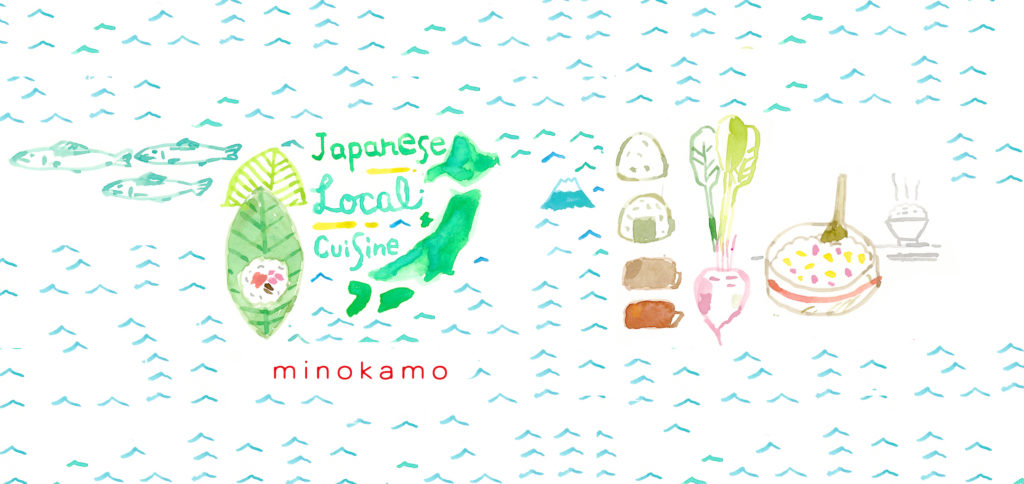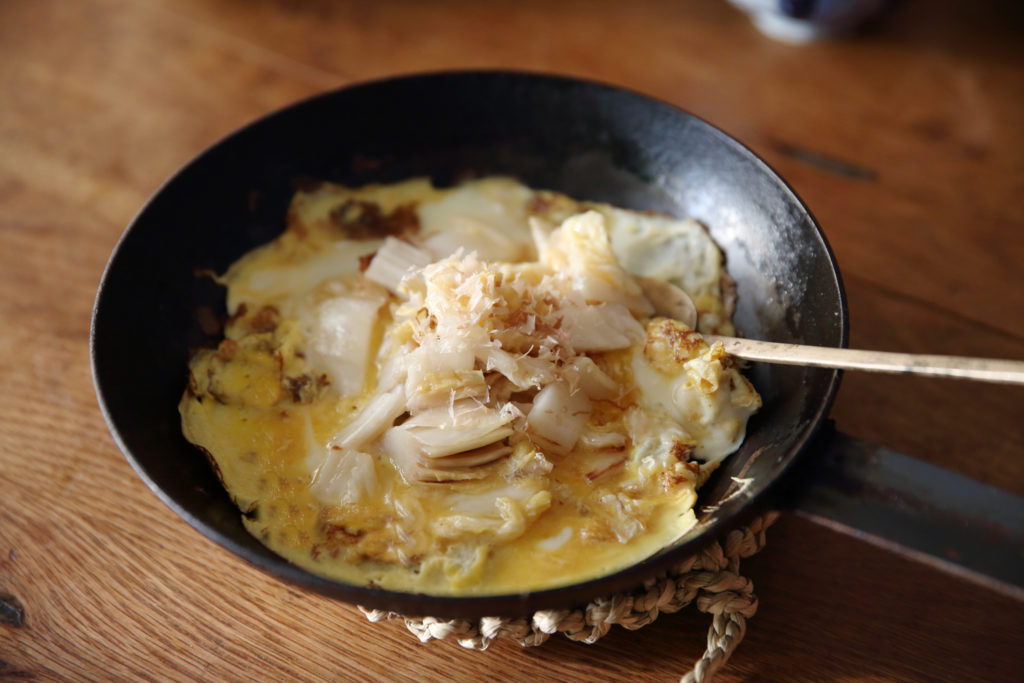
Ingredients
130 g Hakusai-zuke / Pickled napa cabbage
A (beat in advance)
・2 eggs
・1 tbsp mirin (or 1 tsp sugar)
・1/2 tbsp soy sauce
1 tbsp rice bran oil (or olive oil)
Katsuobushi / bonito flakes to garnish
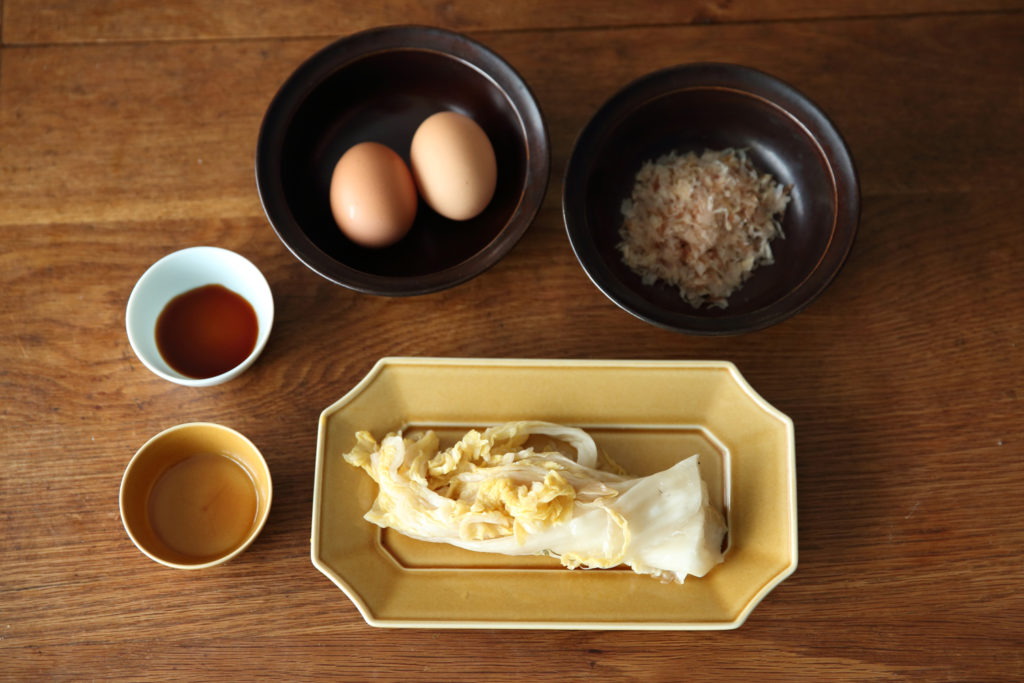
How to Make
1. Cut the pickled napa cabbage into 3 cm pieces. Heat the oil in a skillet, sauté the pickle over high heat, and gather it in the center.
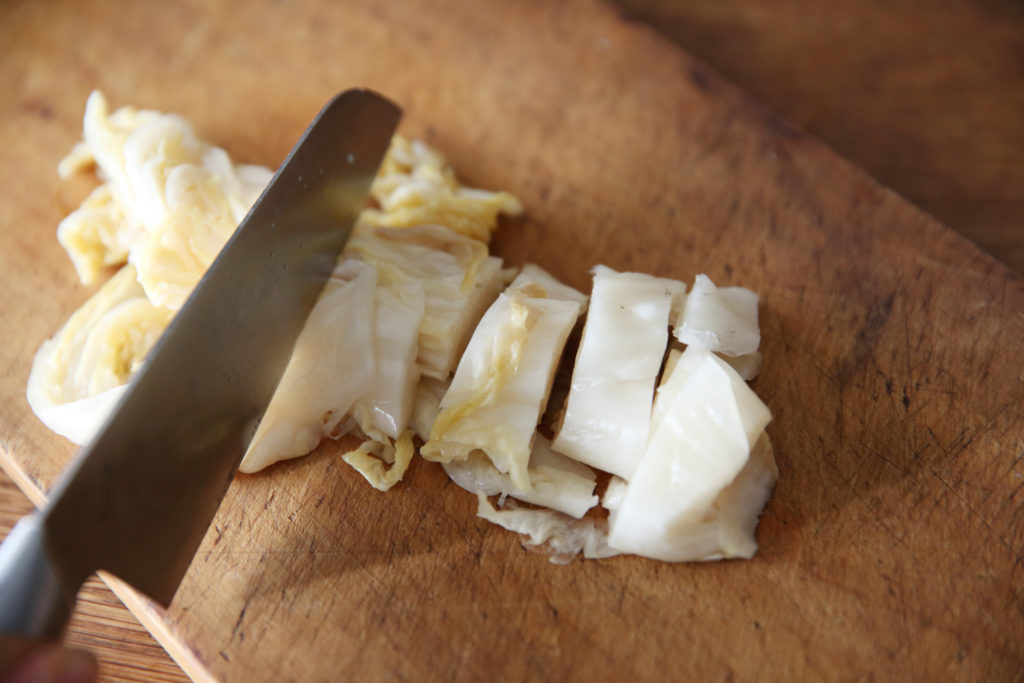
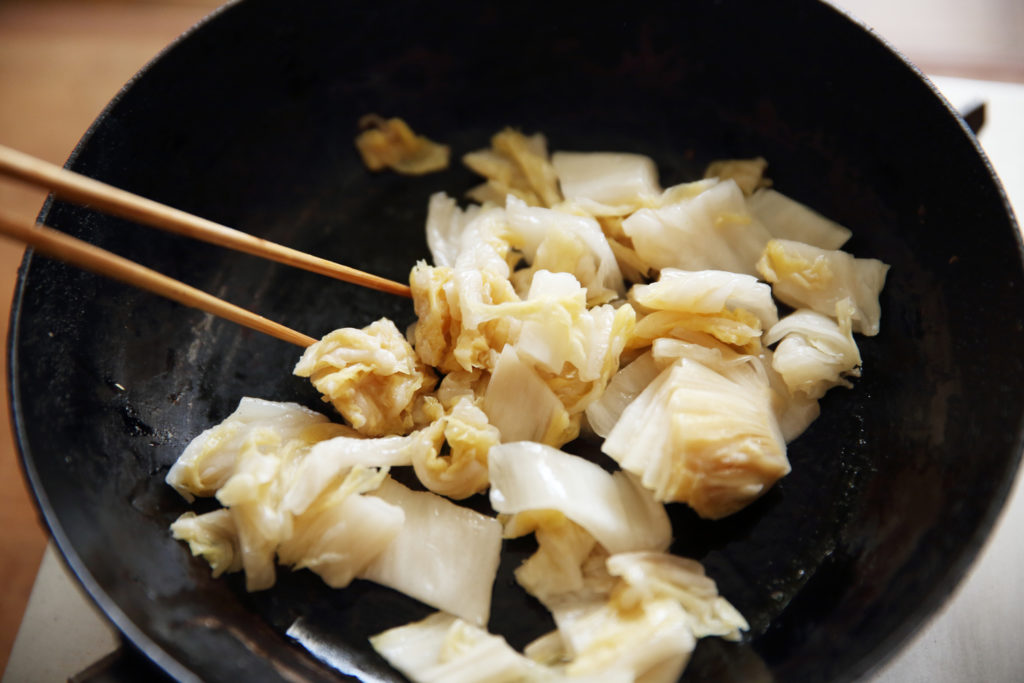
2. Drizzle the egg around the sides of the skillet and stir once or twice with chopsticks. Cook until the egg is as runny or firm as you like, and sprinkle the bonito flakes to finish. Serve hot in the skillet.
* Turn the heat off when the eggs are slightly underdone, since they will continue to cook in the residual heat.
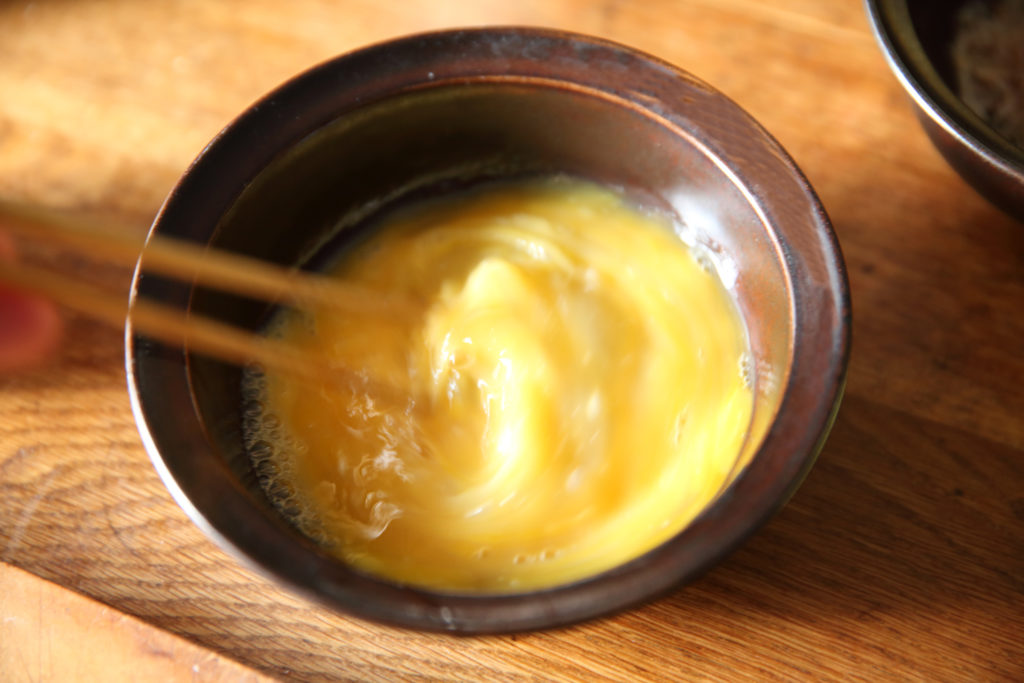
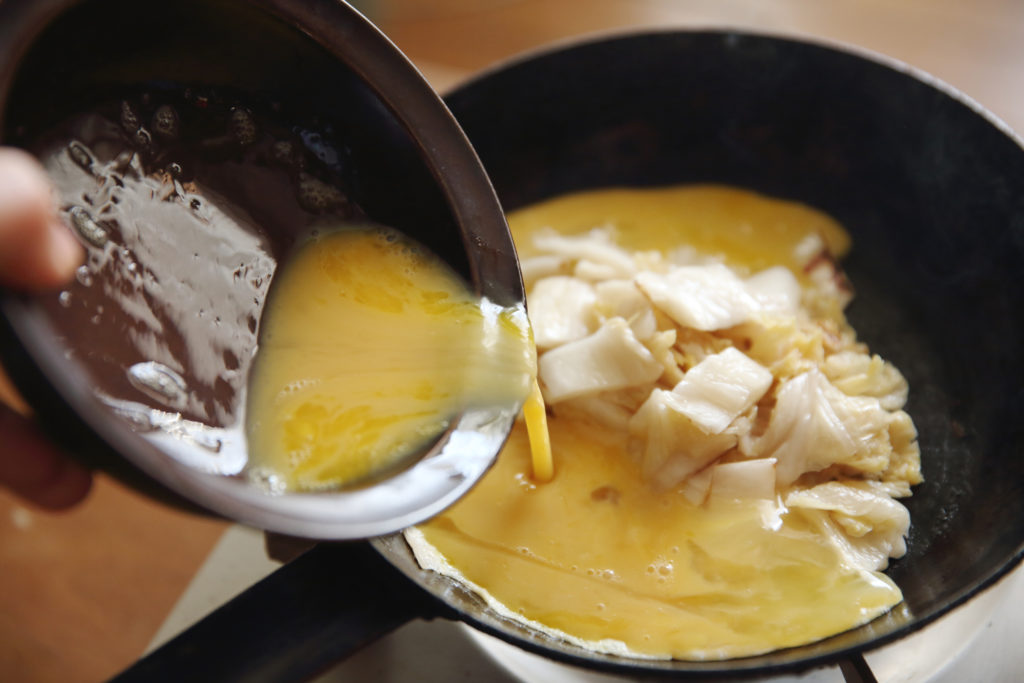
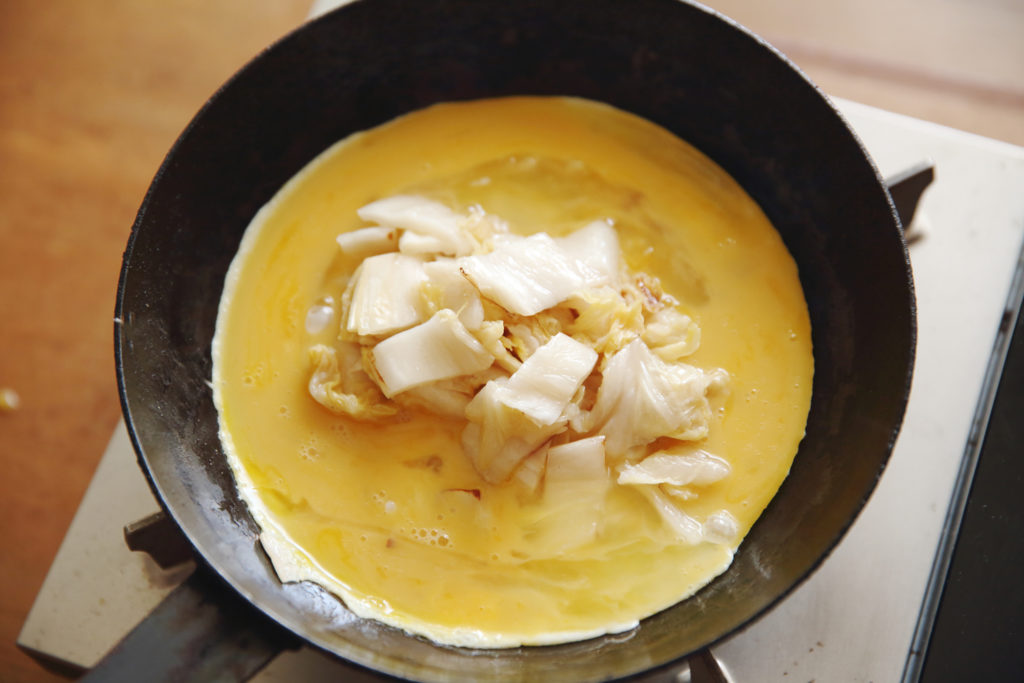
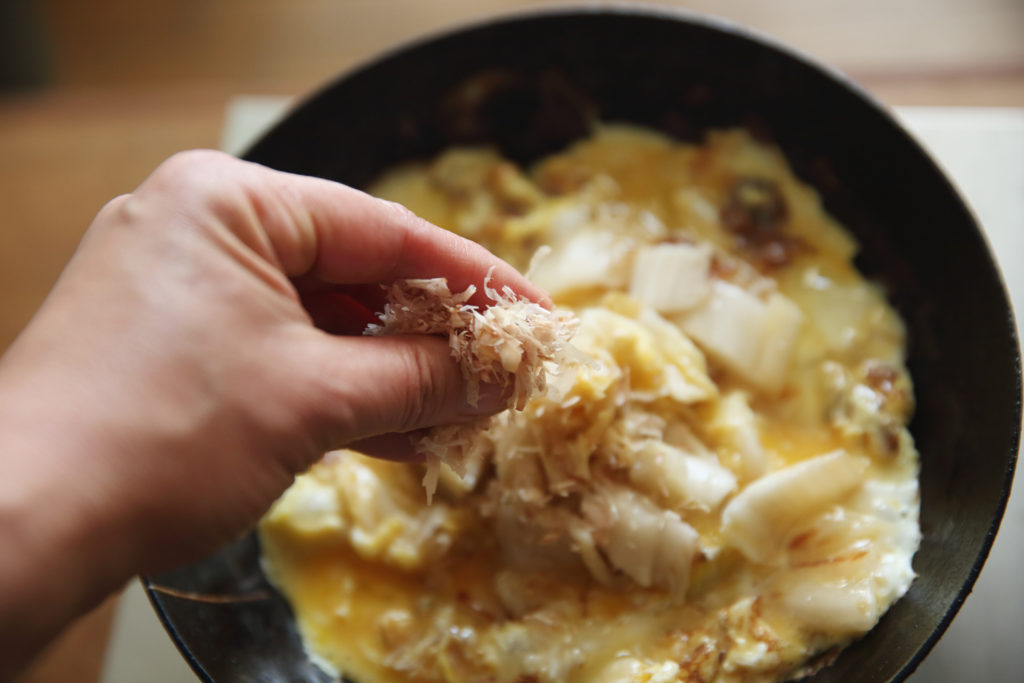
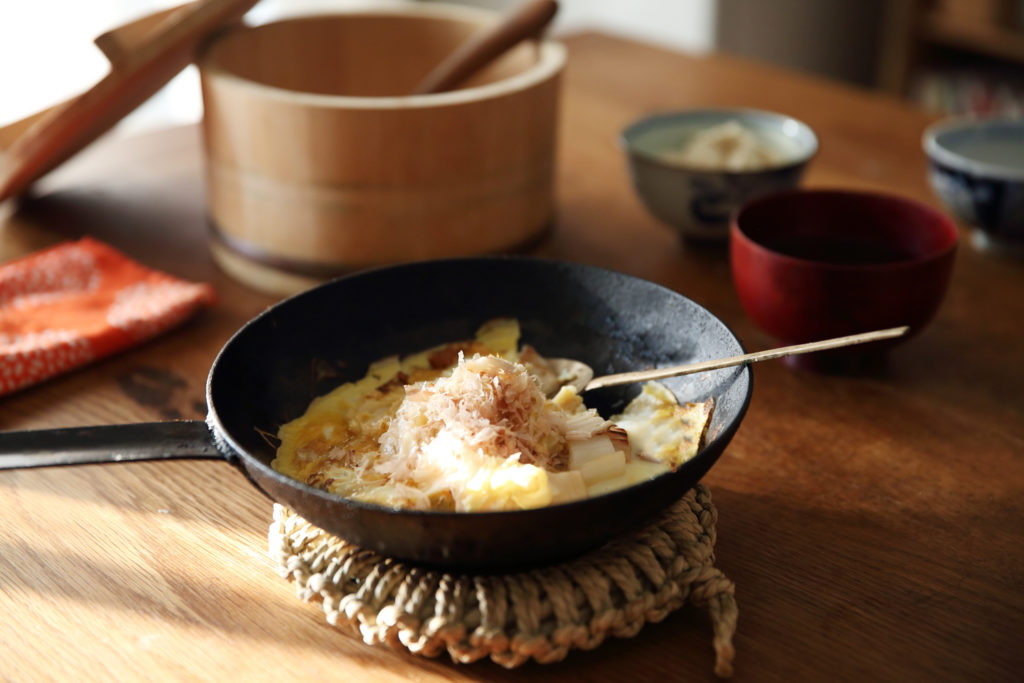
Take a tsukemono pickle, sauté it in a griddle or skillet, cook it with beaten egg, and voila—tsukemono steak, a dish from the Hida region of Gifu Prefecture. Vegetables pickled over a long period of time release lactic acid bacteria, which produce a sour tang. Sautéing helps to mellow out the sour taste, and the egg elevates the pickle into a luxury treat.
The idea originally emerged because now and again, pickles froze during the cold winters of the Hida region. The residents made a fried and simmered dish called nita-kumoji—“simmered kumoji,” with kumoji meaning tsukemono pickle in the Hida dialect—and developed a culture of sautéing their pickles. It is unclear when tsukemono steak emerged; perhaps in an era when eggs became more affordable. Today, the dish is a stalwart on izakaya pub menus, creating the impression that it’s enjoyed only when dining out. But actually, every home makes the recipe during the cold season, and some even have a griddle set aside just for this purpose. Some locals like to make tsukemono steak with kirizuke, a variety of lightly pickled azazuke mixing cut vegetables like napa cabbage, daikon, and carrot.
If you live outside Japan and have trouble finding pickled napa cabbage, try making your own daikon, cabbage, or carrot asazuke. Cut the vegetables, place them in a plastic bag containing salt 3% the weight of the ingredients, press out the air, and leave for at least one day. Bonito flakes can be substituted deliciously with parched sesame seeds.
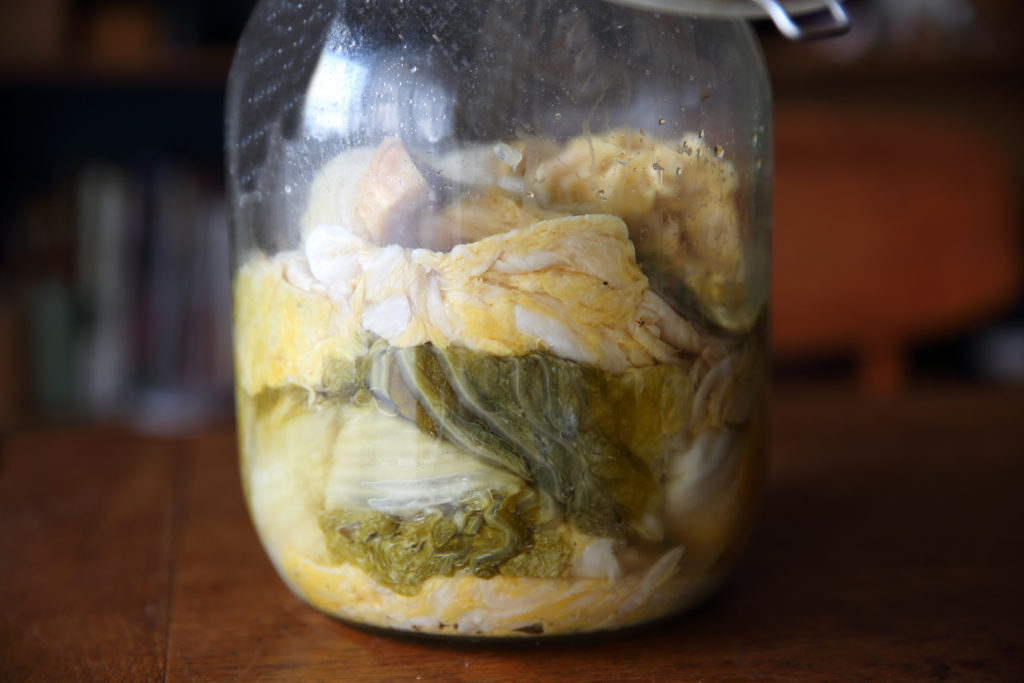
minokamo | Cookery expert / Photographer
Gifu Prefecture native minokamo’s culinary adventures were inspired by her fond childhood memories of cooking with her grandmother. She researches, writes about, and arranges regional dishes that capture, through their preparation and presentation, sensory enjoyments inspired by local climate, history, and lifestyles. Her book, Ryori tabi kara tadaima is a collection of recipes from minokamo’s visits to homes up and down Japan.
